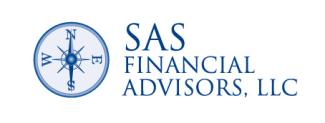
K-1s and the Fed
For SAS managed accounts at TD Ameritrade Institutional:
- Log in with your username and password at www.advisorclient.com
- Choose tab "Documents"
- Then choose from the left "Tax Documents"
- Finally, download all listed 2021 Form 1099 documents
- Do the same for all other accounts outside of SAS/TD
Sign up for e-delivery of tax documents by logging into www.advisorclient.com, then clicking My Profile > Communication Preferences.
SAS Investment Management Clients: K-1’s
UBTI or Unrelated Business Taxable Income is an item on a K-1 generated by partnerships such as Rubicon or some publicly traded securities. As an SAS client you might have received a K-1, but in no case have you exceeded the amount of UBTI to require reporting this on your taxes. However, if you have received these K-1s please submit the K-1 to your tax preparer or include them on your tax forms if you prepare your own tax return.
The Fed
This week, the Federal Reserve raised the Fed Funds rate from 0-.25% to .25-.50%. This raise has been promised since the end of last year. It is not a surprise and is probably the first of a number of rate increases this year. The Fed has raised its expectation for inflation this year only to over 4% with lower expectations to 2.6% for 2023, above the Fed goal of 2%.
Impact on stock values
From the WSJ today:
"Stocks Typically Fall the Month After the Fed Kicks Off Rate Increases
The Federal Reserve's path to rate increases has spurred volatility across financial markets. There may be more turbulence to come over the next month.
In the five rate-rise cycles since 1990, the three major indexes have fallen the month after the first rate increase every single time, according to Dow Jones Market Data.
The good news? Stocks usually rebounded after that. Within six to 12 months, the S&P 500 and other major indexes typically rose. For example, the S&P 500 has fallen an average of 3.9% the month after the first rate increase since 1994. It has gained an average of 12% a year later.
The prospect of rate rises has already stirred turbulence in major indexes and sent Treasury yields sharply higher. The Nasdaq Composite has fallen into a bear market, while the S&P 500 and Dow Jones Industrial Average have suffered corrections, defined as a drop of at least 10% from highs."
Will this time be the same? Currently, we have other concerns like historically high asset valuations, a war in Ukraine with a nuclear threat, and supply constraints caused by a 2 year pandemic that is not necessarily over. Interest rates have moved up in anticipation of today’s Federal Reserve move but often the true reaction to the Fed moves are felt days after the announcement. Generally, economists feel that the Fed Funds rate will return to the level before the Pandemic, so we are looking at a Fed Funds rate of about 2%. With inflation over 2%, the real return is .4% but safe.
Remember the Pandemic? We traveled to Tucson AZ over the past weekend and mask wearing was definitely the exception. We did manage to eat outside in restaurants but we had breakfast, lunch and dinner inside in the hotel restaurant. We were just about the only hotel guests wearing masks as we walked through the hotel and riding the elevator. Clearly, Americans are done with Covid. What does this mean? There are recent trend increases in infections in the UK and Europe. In the past, what happens in Europe comes to America. Will the infection and hospitalization rate increases prompt more protective behaviors or not?
Welcome SPRING!
Longer days have arrived! Hope daylight savings time wasn’t too disruptive to your households. Interestingly, Daylight Savings time is up for consideration and it's not the first time.
This website is informational only and does not constitute investment advice or a solicitation. Investments and investment strategies recommended in this blog may not be suitable for all investors. SAS Financial Advisors, LLC and its members may hold positions in the securities mentioned within this newsletter.
The SAS Newsletters are posted on the SAS Blog weekly: https://www.sasadvisors.com/blog

